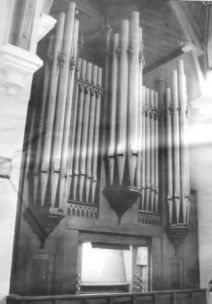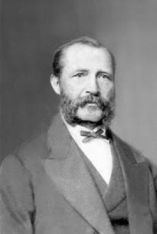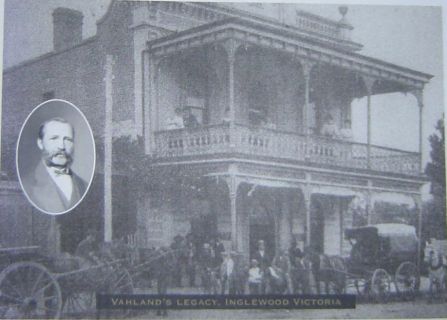History
The History of Inglewood
This historic gold mining town presents a vision of the past. Inglewood forms part of the famous ‘Golden Triangle' which encompasses some of the richest alluvial goldfields in the world. The last great Victorian gold rush occurred here in the 1860's, bringing prosperity and a burgeoning new life to a rural community, clearing the land of mallee scrub and producing wool for the young colony and for export to England.
Gold was like a magnet and miners flocked to Inglewood from all corners of the globe. A few miners' tents rapidly became a tent town of thousands. Inglewood became known as ‘the city in the scrub'. In the third year of its existence Inglewood became a municipality, the Borough of Inglewood. Such was the wealth taken from the earth and rock, that the tent town became a community of substance, buildings of timber and brick; imposing structures, several of which stand today.
The gold was eventually extracted to economic limits and the miners departed. A new, though less profitable industry helped the town survive. Eucalyptus oil, first recognised for its wide ranging qualities from the earliest years of colonial occupation, was produced in quantity in the district. The Blue Mallee, locally known as 'Blue Eucy ', which produced an oil of exceptional quality, grows in
abundance in the area.
As with gold, time brought changes which saw a marked reduction in Eucalyptus oil production in Victoria.
Inglewood Today
These days Inglewood is a service town for the surrounding rural districts and smaller communities.
Stay a while and you will be able to explore the town by taking the Blue Plaque Trail, a walk which will bring to life the history of many of the old buildings in town.
Stroll along the heritage precinct of Brooke Street and enjoy its ambience and character and eclectic mix of old wares stores. Visit the Eucy Distillery Museum and learn about the history and production of eucalyptus oil.
Historical Society
The local historical society meets regularly and documents the history of Inglewood and the surrounding district history. Some books are available for sale and basic research services are also available.
Contacts available on their website. more >
Historic Fincham Organ
The St Augustine's Church organ is now a wonderful piece of Inglewood's History. It was built by the renowned George Fincham. George, an Englishman, arrived at Port Philip Bay in 1852 at the young age of 24 years, being a fully trained and experienced organ builder.
He became recognised as the most important organ builder in 19th century Australia, and had a work ethic which set him apart in the business with a large number of organs constructed. Few of his grander organs survive today, but this Inglewood organ is testament to his fine workmanship and skill.
St Augustine's Anglican church has been home to the organ since it was installed in 1878 at a cost of 350 pounds. Now over 130 years old, it has recently been restored and overhauled to its glory. The church was some 14 years old when the organ was first installed. It was subsequently moved within the church, had a new Piccolo stop added in 1886 and was overhauled by Fincham in 1910.
The historic organ was registered by heritage Victoria and is seen as highly significant because it is so original. Certainly it has been an important part of the life of this community .
William Charles Vahland .....and the Inglewood connection

William Charles Vahland (1828-1915)
On July 22nd this year we commemorate the 100th anniversary of his passing.
Born in Germany he was an architect by profession who designed many public buildings in the goldfields. He also worked as a carpenter, goldminer, local government councillor & winemaker. The firm (working with another German architect, Robert Getzschmann ) practised in Bendigo and the goldfields and further afield in places including Hay, Deniliquin, Lorne, Lancefield, Rochester, Rushworth, Swan Hill, Yarrawonga and Benalla.
They also had an office in Echuca while constructing the Echuca Town Hall, the Court House and the Church of England. Vahland also spent some time in Napier, New Zealand fulfilling contracts. He encouraged European artisans to emigrate to the Sandhurst goldfields and so create a "Vienna of the south".
Some of Inglewood building works attributed to Mr Vahland
- 1864: Church of England Sullivan Street.
- 1884: Supervised the installation of the Stained Glass Windows in the church.
- 1879: Second Storey of the Charlie Napier Hotel Brooke Street.
- 1881: Porters Store Corner Brooke Street and Verdon Street Inglewood commissioned by Miss Holden.
- 1883: Inglewood Hospital.
- 1891: Oversaw the construction of a stage and strong room at the Town Hall Verdon Street.
- 1892: Over saw the replacement of the roof of the Town Hall.
At least 6 private dwellings of the design used by Vahland are scattered around town.

The former Charlie Napier Hotel is one of Inglewood's prized buildings and is architecturally significant as a representative example of his work.
The postcard featured here is available for sale at Fusspots At Inglewood in Brooke Street.
The Inglewood & District Historical Society is currently in the process of identifying and listing other Vahland properties in Inglewood. There are increasingly more being discovered now as research continues.
Come and explore Inglewood in the Loddon Mallee. Just 50km NW or Bendigo. www.inglewood.vic.au